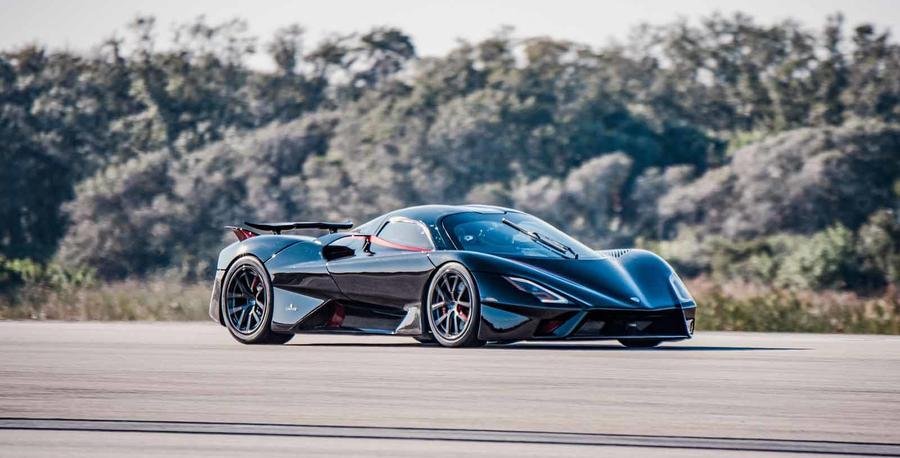SSC reruns Tuatara speed record attempt, hits 460 km/h

SSC has rerun its top speed record with its new 1750bhp Tuatara hypercar after the legitimacy of its first attempt last October came under scrutiny.
The American company is now claiming to have set two-way average record of 282.9mph on 17 January at the Johnny Bohmer Proving Grounds near the Kennedy Space Center in Florida.
The maximum speed on the northbound run was 279.7mph, rising to 286.1mph on the southbound run.
While those speeds are significantly lower than the claimed average of 316.11mph quoted after SSC's first run in Nevada, they are enough for the company to pip the Koenigsegg Agera RS's 277.9mph figure from 2017 and make the Tuatara the world's fastest production car.
What makes the run even more unique is that instead of the car being driven by British racing driver Oliver Webb, as it was in Nevada, it was driven by the owner of the car, entrepreneur Dr Larry Caplin.
This time, the speed was validated using multiple GPS speed recording systems supplied by Racelogic, Life Racing, Garmin and IMRA.
The available space for the speed run was just 2.3 miles (in Nevada a seven-mile road stretch was used), with the 286mph maximum said to have bee achieved in 1.9 miles. SSC claims it reached 244mph within one mile and accelerated from 274-286mph in just 2.87sec.
"We took a different approach this time in accelerating the car to the higher speeds", said SSC CEO Jerod Shelby.
"Larry Caplin, who owns the car, used a 'drag race' style of acceleration during the record runs, pulling full throttle and boost for 40-50 seconds. Back in October, we were leaning into the speed much slower and used only about 20-25 seconds of full throttle and boost during the run. Larry pulled off a run that was far more difficult, at least by a factor of four, than what we attempted in Nevada."
Caplin claimed he "got a taste of full power in the top of seventh on the last run" and said he is "excited to come back and break 300mph".
The discredited first attempt
In last year's attempt, Webb was said to have conducted two runs in the Tuatara on a seven-mile stretch of road in Nevada at an average speed of 316.11mph. Not only was that nearly 40mph faster than the Koenigsegg, but it also smashed Bugatti's 304.77mph run in the Chiron (which wasn't done in two ways so isn't officially recognised).
However, a number of influential media figures and commentators cast doubt on the legitimacy of the claim after reviewing SSC's official video to back up the claim.
Shelby then went on the record to try to clarify the situation, stating there "was a mix-up on the editing side" that caused the difference between the GPS figures and the actual on-road speeds visible in the video.
Dewetron, the Austrian company that SSC claims validated the run, released a statement claiming that it neither approved nor validated the run. It was speculated that SSC's engineers incorrectly calibrated the system.
Later on, Shelby admitted that, after seeing the raw video files, his team "all of a sudden were seeing the same doubts" over the run.
"The perfect view I had of this record is now gone", Shelby elaborated. "No matter what we do in the coming days to try to salvage this particular record, it's always going to have a stain on it".
Guinness World Record rules state that to set the 'fastest production vehicle' record, a car must drive the same route in opposite directions and average the two speeds.
In addition, it must be a production car, achieve the record on public roads, have its speed tracked by a certified GPS measurement system, have two world-record sanctioned witnesses on site for verification and run on street-specification tyres and fuel.
The Tuatura's bespoke twin-turbocharged 5.9-litre V8 engine - made in collaboration with Nelson Racing Engines - produces 1750bhp while using E85 fuel (or 1350bhp on 91 Octane) and 1280lb ft of torque. Power is delivered to the rear wheels via a seven-speed manual gearbox.
The Tuatara is produced at a purpose-built facility in West Richland, Washington, and will cost around $1.3 million (£1 million). Just 100 examples are planned to be made.
Nouvelles connexes


